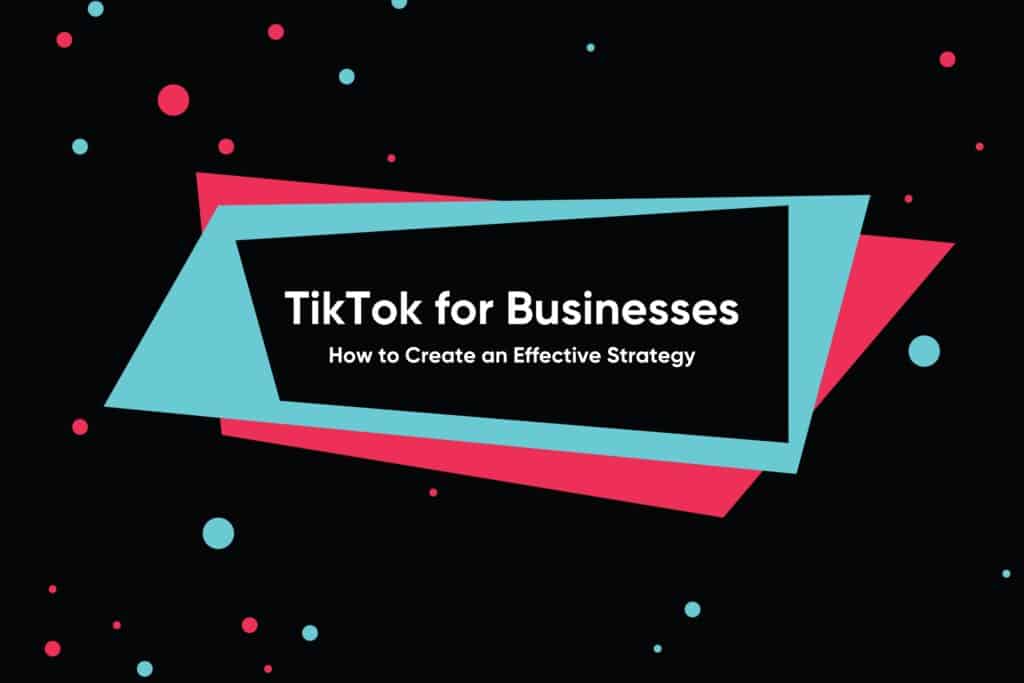
How to Combat Instagram's Organic Reach Decline in 2023: It's no secret that Instagram has been facing heavy scrutiny from its users over the past year or so due to the infamous and ever-changing algorithm. Many users have complained that their photos, in particular, receive far less traction—likes, shares, views, etc.—than in previous years due to the introduction of Instagram Reels in August 2020.
Reels were first introduced to compete with the powerhouse TikTok, which uses full-screen video clips ranging from just seconds to ten minutes. But since the introduction of Reels, many users have seen the "decline" of Instagram right before their eyes in the form of Jersey-Shore-like reels dominating their feeds, irrelevant ads in place of every fourth post, and a plethora of posts from unfollowed accounts.
Flashback to 2010, when Instagram was first launched; feeds were chronological, ads were nonexistent, Reels were a distant dream, and posts from accounts were only shown to users if they were following those accounts. In many ways, that version of Instagram, though still highly immature, was what garnered so much traction for the platform in the first place.
Looking at recent stats in this interesting post, it is clear that Instagram itself is certainly not dead or dying. Instead, it continues to grow. With over 2 billion reported active users per month spending an average of 30 minutes (for US adults) on the platform per day, it's no wonder why so many marketers have continued to leverage the platform.
But the Instagram once known for its organic reach and engagement has transfigured itself from a fun and socially-oriented platform where users could interact with one another and build a community to a pay-to-play marketing domain aimed at sucking users into mindless doom scrolling and useless purchasing. And with that, let's get into how to combat Instagram's (obviously) declining organic reach and engagement.
Is Instagram Dying?
No, Instagram is not "dying." In fact, it has seen tremendous growth in recent years, with over 2 billion reported monthly users and counting. Instagram is a popular platform for sharing photos and videos, connecting with friends, and discovering content worldwide. With its growing user base and the introduction of new features, Instagram is likely to continue to be a popular platform for many years to come.
But just because a platform is "growing" on paper doesn't necessarily mean everything is sunshine and daisies. After all, since the general public has no way of measuring Instagram's growth, it's important to take their reports with a grain of salt. Think about it, how many accounts per day follow or engage with your profile? And how many of those accounts are clearly spam/bots? In our experience, we'd be willing to guess of all "2 billions+" Instagram accounts, around 10%-15% of them are spam/bots (but of course, we have no way of proving that).
Why Does Instagram Have So Many Bots and Spam Accounts?
Instagram has so many bots and spam accounts because using bots is a low-cost, automated way for companies to promote their services and products. Companies can create accounts and use automated software to post content, follow others, and like posts to generate followers and engagement. These bots and spam accounts can also be used to generate fake reviews, manipulate trends, and even spread malicious content.
So, why doesn't Instagram put a stop to all these bots? Well, our best guess is that they don't see it as worth their time. At the end of the day, spam accounts and bots don't really hurt Instagram as much as they create an inauthentic and cheap experience. Sure, many spam accounts promote explicit content and spread false information, but they are typically very obvious to identify as spam.
Another school of thought is that they don't want to remove the spam problem because they care greatly about the number of users they have, even if many of them aren't real humans. Does it make sense that of the 8 billion+ humans on earth, 2 billion+ of them are opening Instagram at least once per month? No, absolutely not.
Take a look at this breakdown of the earth's population in 2020. I don't pretend to be an expert in sociology, but how many 65+ year-olds do you know that regularly use Instagram (sure, the cool grandparents out there)? And for that matter, how many of the 8 billion+ people in the world actually have regular access to smartphones and the internet? And not to mention, countries like China, Russia, Belarus, Iran, Uganda, North Korea, and Turkmenistan, to name a few, have outright blocked Instagram—that's around 1.8 billion people not allowed to use Instagram (this number is just a rough estimate: population data isn't 100% accurate, people can use VPNs and other technology to bypass these restrictions, etc.).
Again, obviously, this cannot be proven, but it seems highly unlikely that 25% of the world uses Instagram regularly. But for a multinational social media platform, it's more impressive to boast 2 billion+ users than 1 billion+ users (which is still impressive).
How Have Fake Accounts Affected Organic Reach and Engagement?
Fake accounts have had a detrimental effect on organic reach and engagement. Fake accounts—spam/bot accounts—are often created to increase the number of followers or likes a page has, which can give the appearance of increased engagement and popularity. This can lead to organic reach and engagement being artificially inflated and does not reflect the actual interest in a page or post.
As a result, Instagram's algorithm has been modified to "punish" or "shadow-ban" such accounts that primarily use bots to inflate their image. But, somehow, it seems these algorithm changes have punished everyone in recent months, resulting in little-to-no organic engagement and reach rather than fixing the spam problem at its source (which they could very easily do if they wanted).
How to Combat Instagram's Organic Reach Decline
The unfortunate truth about Instagram is that organic reach and engagement seem to be dwindling even more by the minute. It was once thought that posting high-quality, unique content was a surefire way to be rewarded by the algorithm, but that theory has since been proven unreliable. There is no fool-proof way to boost organic reach and engagement, but here are some general principles to follow:
Post Trending Content
Trending topics on Instagram are usually related to current events, popular culture, and timely topics that are likely to generate interest from social media users. When users post content related to trending topics, it can help them reach a wider audience and increase engagement. This is because people are more likely to engage with content that is timely and relevant to their interests.
Additionally, people tend to share trending content more often, which can help to amplify a post's reach further. Instagram's algorithm favors posts that are timely and relevant, so posting content related to trending topics can help users to appear higher in and in more feeds. So, if you want organic engagement, get ready to stoop to a level you never thought you or your business would.
Use Reels to Your Advantage
Posting Reels on Instagram can be a great way to boost organic reach and engagement. Reels provide a unique way to tell stories, showcase products, and engage with followers. Reels are visually appealing, allowing users to get creative with their content. Reels can be a great tool to increase organic reach and engagement because they have the potential to go viral and be shared across multiple platforms (not to mention, Instagram stated their algorithm prefers Reels over static photos).
According to a study by Hootsuite, Reels are the most engaging type of content on Instagram. They found that Reels had a 7.4% engagement rate, compared to 2.4% for posts and 4.2% for stories. When it comes to the types of content that are popular on Reels, the most successful ones tend to be short, creative, and entertaining. Videos that are funny, informative, and visually appealing are the most likely to be shared and viewed.
For example, a study by Socialinsider found that videos with music had the highest engagement rate at 11.3%. Other popular types of content with high engagement rates include tutorials, interviews, and behind-the-scenes videos at 10.5%, 9.3%, and 8.7%, respectively.
Overall, Reels can be a great way to boost organic reach and engagement on Instagram. By creating creative, entertaining content that is optimized for the platform, brands can use Reels to increase their reach and engagement without paying a cent.
Pay-to-Play
As annoying as it seems, Instagram is, at the end of the day, a business. At first, it was designed to be a social platform where users could connect and build communities. But, since it was absorbed by Meta (previously Facebook), every aspect of the app and the principles on which it was founded have changed. Meta understands that people want to feel important and be seen/heard, and businesses want to have an audience to sell their products.
And with that, they also understand that people will pay money for something if they want it bad enough. So, the moral of this story is that organic engagement with high-quality, meaningful content is mostly dead for those of us that aren't the Beethovens of our generation. But as with anything, money can get you places. If you are like me, someone who used to use Instagram for the fun of sharing art and networking with other local artists, the fact remains that Instagram is still a great place to meet people and see great work, as long as you can accept that organic reach will continue to fall.
Even though it is frustrating and disheartening, Instagram is entitled to do whatever they want with the platform because it's theirs to do with whatever they want. If they were wise, they would listen to their users, but as long as they have a steadily increasing flow of income hitting their bank accounts, they will continue to ruin the app in ways that will make it more profitable.
The Bottom Line
Though it seems Instagram is on a constant downward spiral, the beauty of social media platforms is that they constantly evolve. Sure, Instagram's organic reach and engagement are in the gutter at the moment for the average users, but if enough people share their thoughts and as other new platforms develop, moguls like Instagram and Facebook will be forced to evolve with the times.
With that said, the constant posting of high-quality content that remains true to you and your business is crucial for all users looking to grow their audience and organic reach. Another thing to remember is that Instagram is a business. Without consistent profitability, it can't continue to deliver one of the most popular social media platforms in the world (look at Vine; it was great for users but was not profitable). So is an occasional ad or unrelated Reel really the end of the world? Probably not.
As Instagram becomes increasingly competitive, remember that social media fame really isn't the most important thing in the world (maybe it is for you, which is totally fine!). If you're an artist looking to share your work with others, don't let the idea of internet stardom distract you from why you create your art in the first place.
On the other hand, if you are looking for a huge following to listen to your opinions on why cats are superior to dogs, keep being true to you, and eventually, the right people will find you (maybe now more slowly than before).
As a business owner, it's important to accept the reality that Instagram's declined organic reach and engagement for business accounts, in particular, is no coincidence. They've found a sneaky way to monetize all business goings-ons on their platform; if you want your business page to be seen, you will have to pay to play unless you can find a way to maximize your Reels game. Even still, organic reach and engagement for businesses are dead (even more so than for non-business accounts).
For more helpful marketing tips and tricks, read more posts from our blog.


